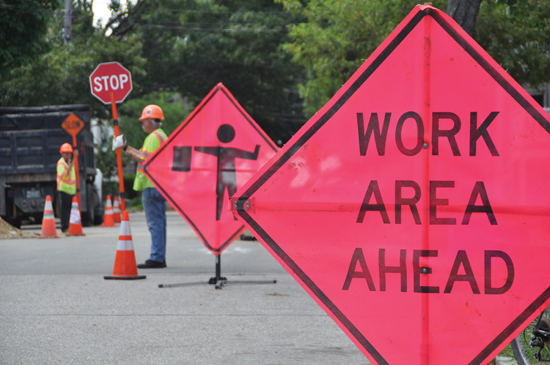
What skills are needed today to tackle the risks of tomorrow?
June 15, 2021
By
Lisa McGuire
Safety pros need to be equipped with appropriate competencies

Today’s OH&S professionals need a range of skills to support changing environments, including occupational medicine, epidemiology, occupational hygiene, mental health and human factors. (Trailfan/Adobe Stock)
We have consistently recognized the importance of protecting workers.
Still, the pandemic has elevated the significance of just how critical health, safety and well-being are to operate businesses successfully — especially in the manufacturing sector where the workforce is required to be on-site.
News reports of COVID-19 outbreaks in plants showcase the impact when safety controls are unsuccessful; business’s productivity and employee retention depend on protecting workers’ mental and physical health.
At the same time, manufacturers’ futures rely on how effectively they can address four significant challenges:
- the changing nature of manufacturing work
- an aging workforce driving an increase in the hiring of younger and less-experienced workers
- technology changes in the plant
- the unpredictability of economic globalization.
These factors have a direct impact on the occupational health and safety (OH&S) risk to workers.
And when manufacturing leaders look to build, evolve and strengthen health and safety controls, they turn to health and safety practitioners to protect their people and their business.
OH&S an emerging multi-disciplinary profession
The pandemic has highlighted just how vital the OH&S practitioner is to supporting COVID-19 safety plans while overseeing the many other health and safety risks in the workplace. Today’s OH&S professionals need a range of skills to support changing environments, including occupational medicine, epidemiology, occupational hygiene, mental health and human factors.
They also need interpersonal, management, industry-specific and technical skills to equip them for the work ahead.
In their advisory role, their expertise informs the employer on decisions impacting workers’ health, safety and wellness — they deal with life-and-death issues every day.
While it remains crucial to maintain or exceed regulatory compliance in the workplace, we are increasingly seeing a shift towards a more preventative and holistic approach to workplace health.
OH&S professionals need to partner with other disciplines to advise industry leaders and policymakers on a wide range of issues. To be effective advisers, new OH&S professionals will also need to develop the insight to understand the risks and hazards in the workplace and how they interact within the complex environment of people and business.
Aligning expectations is key
For the past five years, the Manufacturing Safety Alliance of BC has researched the impact of labour market issues in British Columbia’s manufacturing sector for the health and safety profession.
This research included broad participation with manufacturing and union leaders, OH&S professionals, and industry associations across Canada. It has highlighted the need to define a standard set of competencies for OH&S professionals within the manufacturing sector.
The safety profession is largely unregulated, and a broad range of certifications and credentials provide inconsistent and conflicting guidance on the core competencies of a health and safety professional.
We need a clear definition of skills to ensure that professionals in this critical role have the training they need to support their development and the success of their employers.
Mismatched expectations, lack of standardization and burnout fuel a revolving door for OH&S roles. Employers expect specific training and skills, and safety professionals assume they have the skills needed for the job.
Too often, those expectations fail to line up.
To combat this trend, the manufacturing sector requires new provincial and national standards that prepare individuals to perform their job effectively and meet the needs of employers.
Towards standardized accreditation, certification
Education programs must align to a standard set of competencies to ensure that new practitioners have the skills they need to be effective.
Manufacturing also requires additional specialized training because of the complexity of specific risk areas.
OH&S practitioners will need to demonstrate the application of these critical skills — like many other professions — and expand that skill set through continued education and training that enhances their role and addresses new and emerging risks.
Accreditation and certification oversight for this critical profession is long overdue. It needs to start now to meet the growing demands for the health and well-being of workers, OH&S practitioners and businesses.
For more information, visit safetyalliancebc.ca/sector-labour-market-partnership.
Lisa McGuire is the CEO of the Manufacturing Safety Alliance in Chilliwack, B.C., and a regular columnist for OHS Canada.